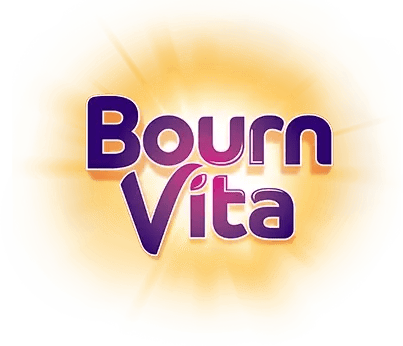- Moong Dal
- Peanuts
- Paneer
- Chana (Black Chickpeas)
- Sattu
- Toor Dal
- Almonds
Introduction

Protein is often associated with meat, eggs or expensive supplements, but walk into any Indian kitchen and you’ll find a treasure trove of vegetarian options that deliver the same punch. Even if you are cooking for growing kids, active teens or even older adults looking to stay strong, there are simple everyday ingredients already sitting in your pantry that do the job.
These aren’t exotic superfoods with some complicated names. They’re the dal you stir at dinner, the chana you roast for snacks and even the seeds sprinkled over your morning paratha. What makes them powerful they come loaded with fibre, iron, calcium and other nutrients that support energy, digestion and immunity all at once.
If you’re looking for ways to add more protein to your family’s diet without making it a science experiment, this list is your shortcut. It’s practical, budget-friendly and completely vegetarian. You don’t need to change what you eat—just see your regular foods in a new light.
7 Vegetarian Indian Foods That Are Surprisingly High in Protein

Protein is the foundation of growth, repair, and energy, especially in growing kids, active teens, and busy adults. And while meat and eggs get the spotlight, the Indian kitchen quietly holds a powerhouse of plant-based protein sources that are easy to cook, affordable, and nutrient-rich. These foods aren’t new—they’re already part of your regular grocery list. All you need is a fresh look at their potential.
Moong Dal
According to a study BioTechnologia (Pozn). 2021, moong dal, whether whole or split, is one of the most easily digestible sources of protein. It’s light on the stomach, cooks fast, and is perfect for toddlers to grandparents. A bowl of moong dal khichdi or soup provides not just protein but also iron and fiber, making it ideal during recovery or as a daily meal booster.
Peanuts
Often eaten as a snack or chutney base, but as per a study published in J Food Sci Technol. 2015, peanuts are rich in protein and healthy fats. Roasted or boiled, they keep energy levels steady and support muscle health. A handful in your child’s snack box or a spoonful of peanut chutney with breakfast can make a real nutritional difference.
Paneer
Research conducted by J Food Sci Technol. 2011, shows that paneer is one of the richest vegetarian sources of protein. It’s calcium-rich too, helping with bone development. Paneer cubes in sabzis, bhurji in rolls, or grilled as tikkas, offer both flavor and nutrition in every bite, making it a family favorite across meals.
Chana (Black Chickpeas)
A study published in Nutrients. 2019 shows that soaked and boiled chana are not just filling, they’re loaded with protein and iron. They help in building stamina and strength, especially in growing teens. A chana salad or sundal tossed with lemon and coconut is a perfect after-school snack that doesn’t feel heavy yet fuels long hours.
Sattu
According to a study published in J Food Sci Technol. 2021, popular in Bihar and Uttar Pradesh, sattu (roasted gram flour) is often called the “poor man’s protein,” but it’s actually a superfood. Mixed with water, jaggery, or buttermilk, it becomes an energy drink. In parathas, laddoos, or even stuffed rotis, sattu is versatile and helps maintain energy levels throughout the day.
Toor Dal
Used in sambars, dals, and khichdis, toor dal is a staple protein source. According to FSSAI, it supports muscle function, satiety, and steady growth. Add a tempering of jeera, garlic, and curry leaves, and it becomes a protein-packed comfort food that nourishes your family from the inside out.
Almonds
As per the study published in, Nutrients. 2018 soaked overnight or eaten raw, almonds are protein-rich and heart-healthy. They’re especially good for kids who need concentrated nutrition in small quantities. Just 4-5 almonds a day support brain development and provide lasting energy without overwhelming little appetites.
Conclusion

You don’t need fancy powders or expensive imports to meet your family’s protein needs. These home-grown ingredients do the job beautifully when used consistently. By adding even one or two of these protein-packed foods to your daily meals, you're helping your child grow stronger, your teen stay active, and your family stay nourished—all while keeping it simple, local, and delicious.
Her love for storytelling began with reading her grandfather’s speeches, where Tarishi saw the power of words in creating lasting memories. Combining her passions for food and writing, she has turned her life into a fulfilling path of sharing stories that celebrate flavours and how food brings communities together.
The views expressed are that of the expert alone.
The information provided in this content is for informational purposes only and should not be considered a substitute for professional medical advice, diagnosis, or treatment. Always seek the advice of your physician or another qualified healthcare provider before making any significant changes to your diet, exercise, or medication routines.
References
https://pmc.ncbi.nlm.nih.gov/articles/PMC5946253/
https://pmc.ncbi.nlm.nih.gov/articles/PMC9206992/
https://pmc.ncbi.nlm.nih.gov/articles/PMC6770251/
















